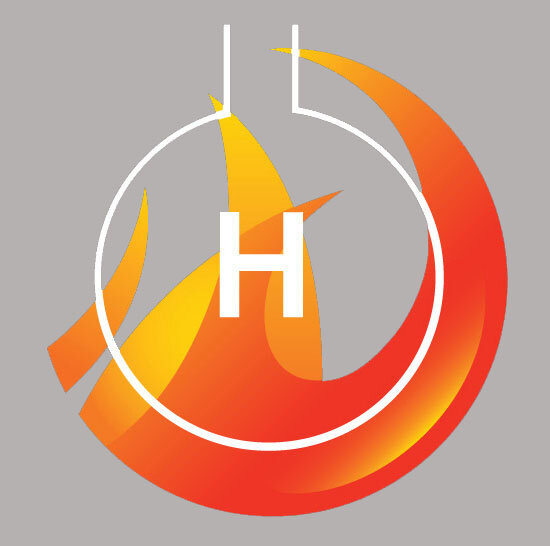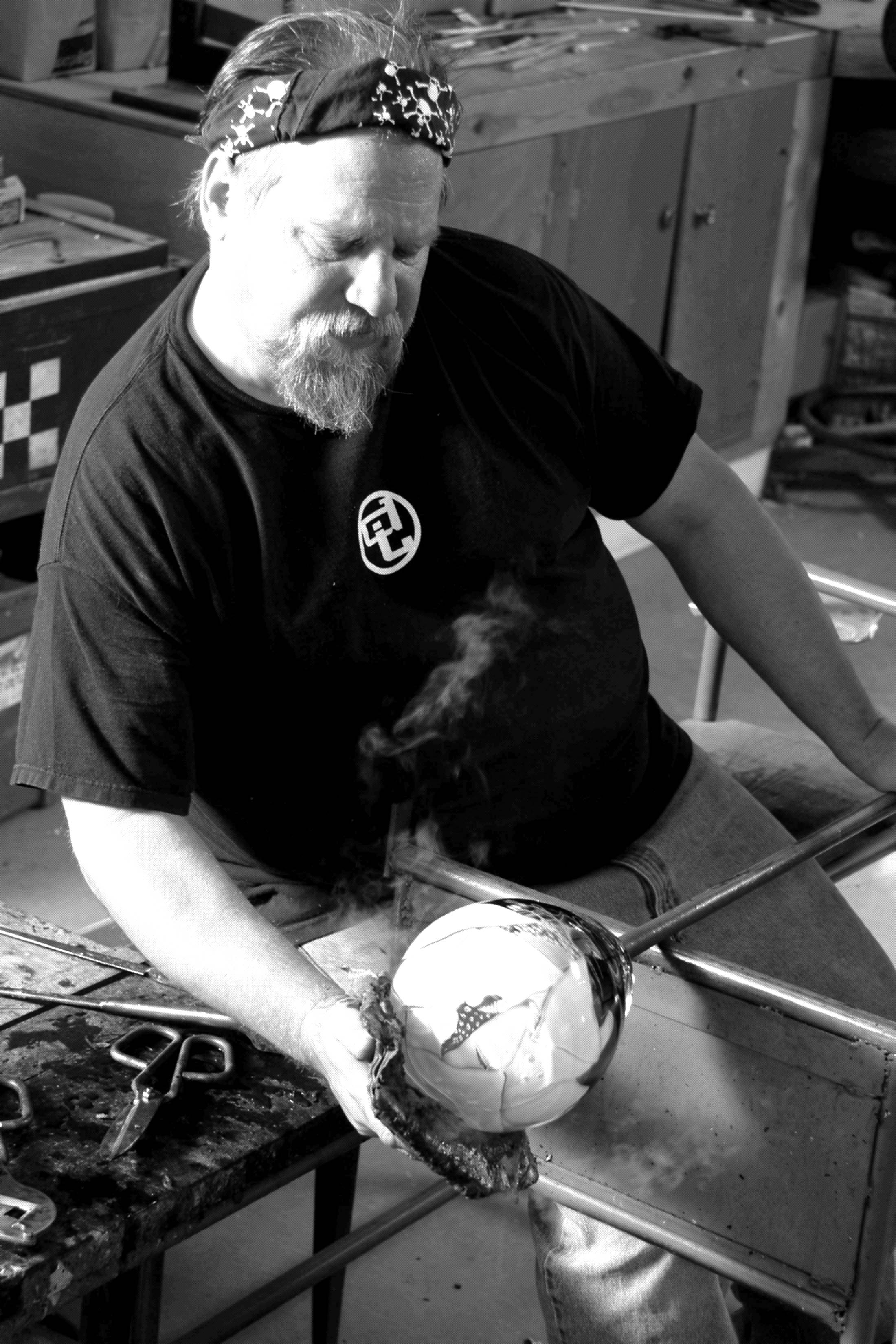About Wes Hunting
I never had an early interest in glass in particular but always had an interest in creativity. Sometimes, I’m not too sure where it’s going; but for me, it’s all about being able to make what I want, when I want, and keep it moving until I can no longer do so. I took the scenic route on the way to working with glass. I was always interested in the visual arts and music, and in 1976, I started my education at Kent State University with a major in painting. During this time, I had a weekend job as a groundskeeper at Hale Farm, an early American historical village just outside of Kent, Ohio. It was there that I was literally thrown into glassblowing.
Hale Farm has a small glass shop along with other craft areas for visitors to walk around and ponder. One afternoon, the head gaffer at the glass shop walked off the job after getting into a tiff with the grounds manager. The manager looked at me and said, “Hunting, get over to the glass studio and give the guy a hand.” The next thing I knew, I was gathering hot, molten glass out of a replica of a historic furnace.
When the next semester started at KSU, I found out from a friend that the college actually had a glass-arts program. There weren’t a lot of universities that offered glass as an art medium in the late 1970s, and it was there that I took my first steps into being educated in glass art. Henry Halem ran the program on a very tight budget at that point in time, and I must say dealt up the best education a young guy could imagine.
Henry was good friends with most of the well-known glass artists, and he brought in many of them for workshops. Between 1977 and 1979, I attended workshops and worked with the likes of Fritz Dreisbach, Dick Marquis, Steve Weinberg, Bert van Loo, Marvin Lipofsky, Dale Chihuly (with William Morris as gaffer), Joel Myers, and the late Bud Hurlstone. KSU was a place of great creative energy that produced many talented artists in their own right.I look back at that period fondly and was lucky to have been part of the madness.
1980 was a banner year for me. I went to the Penland School of Crafts on an assistant scholarship with Rick Bernstein and ended up working for Richard Ritter as a full-time assistant for around six months. He taught me about making glass color and millefiori. Penland has always been a Mecca for studio glass artists. In the early 1980s, I visited many private glass studios and got to meet with or had the pleasure of assisting many of them in the eight months I was there: Mark Peiser, Billy Bernstein, Gary Beecham, Steve Edwards, Rob Levin, and Harvey Littleton to name a few.
In February of 1981, I traveled to Italy for two months to experience the Italian glass scene. My main stops were in Venice and Murano. When I returned, I moved to Chicago. I had planned to build my own hot-glass studio somewhere, and Chicago seemed to be a logical place to do so. Wrong! Chicago proved to be the most difficult place to open up a shop in the world. The fire codes were unbelievably strict, but I managed to finally set up shop at 2710 North Lakewood. It was there that I opened Hunting Studio Glass in the summer of 1982.
The birth of my son, Wesley Justin, in 1987 gave my life new purpose. I left the big city for a more peaceful setting and bought a nice piece of property in central Wisconsin just outside of Princeton. Once I settled in, I found I had more time to focus on my work, and that became evident in the detail and coloration that began to emerge.
As of now, I work with my son, Wesley, as a team in rural Wisconsin. We are always striving to take the work to a new level of intensity. It has developed into a way for me to express myself by painting with molten glass. There is no other material like glass. The colors are totally unique as they can be transparent or opalescent. The way light passes through colored glasses adds a third dimension that cannot be duplicated by any other material.


